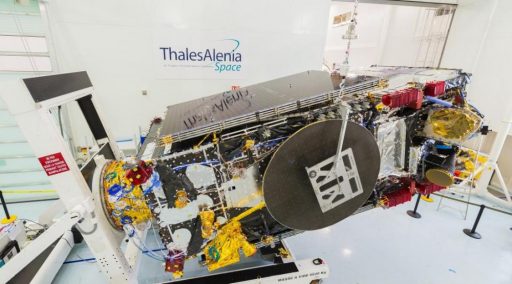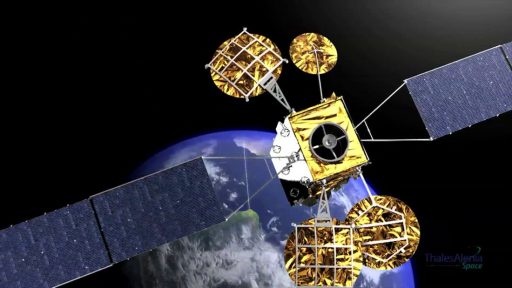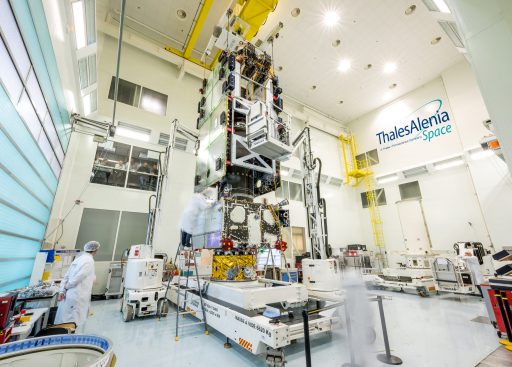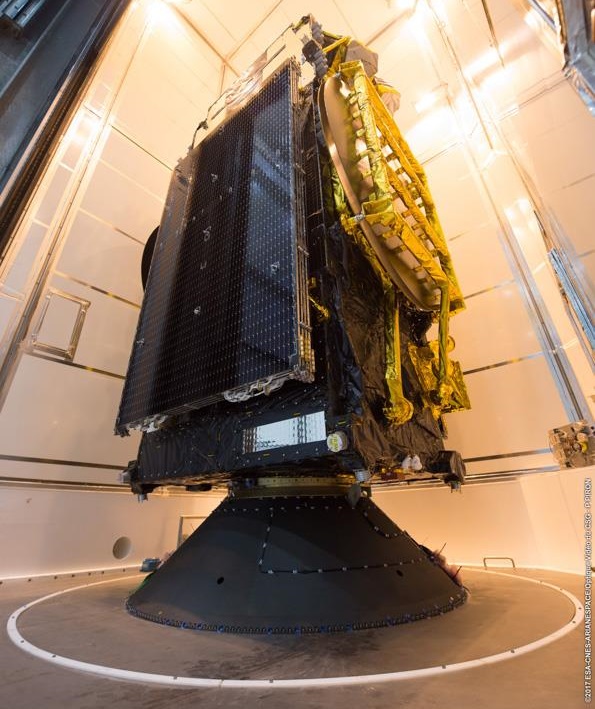SGDC 1 Satellite

SGDC – Geostationary Satellite for Communications and Defense – is a Geostationary defense and strategic communications satellite operated by Telebras on the behalf of the Brazilian government. The high-throughput satellite will deliver Internet services across the Brazilian territory and provide secure means of communication for the government and authorized users with a total throughput capacity of 57 Gbps using the Ka and X-Band frequency range.
The objectives of the SGDC mission are threefold: a) reduce Brazil’s digital divide by delivering high-quality Internet coverage to the entire Brazilian territory under a National Broadband Plan, b) provide secure communication channels for Brazilian Government and Defense strategic communications, and c) acquire technologies for the advancement of the Brazilian space program.

Telebras selected Thales Alenia Space of France in 2013 for the construction of the high-throughput satellite based on the company’s Spacebus-4000C4 platform suitable for heavy communications satellites in the six-metric-ton weight class. SGDC-1 hosts 50 Ka-Band transponders in use for nationwide internet distribution over Brazil and seven X-Band transponders carrying encrypted communications for the Brazilian government.
The Ka-Band payload provides a number of high-capacity beams focused entirely on the Brazilian territory while the X-Band system covers South America and neighboring maritime regions.
The satellite has a liftoff mass of 5,735 Kilograms and measures 7.1 by 2.2 by 2.0 meters in size in its stowed launch configuration, riding in the upper payload slot of the Ariane 5 launch vehicle, reserved for the larger of the two payloads the rocket is carrying.

The flight-proven Spacebus-3000/4000 satellite series offered by Thales covers a range of satellite masses and payload accommodations, suitable for the entire spectrum of Geostationary communications satellites with up to 120 transponders and a payload power up to 16kW, using a 100-Volt power bus (4000 series).
Spacebus dates back to 1985 when the first Aérospatiale-built Spacebus satellite, flying under the Spacebus 100 designation was launched. Over the years, the capabilities of the satellites were expanded owed to more and more powerful launch vehicles becoming available, allowing transponders and equipment to be added to the satellites. Going through constant stages of modernization, Spacebus evolved into its 3000 and later the 4000 series which feature the same basic structure but different avionics systems. Thales provides an ITAR-free version of its satellite buses to allow spacecraft to launch on non-U.S. launch vehicles like the Chinese Long March rocket.

Spacebus 4000 uses a modular approach, with separate construction of the satellite platform and payloads for integration late in the manufacturing process. The 4000 series features upgraded avionics, transitioning from a 50-Volt power bus to a system running at 100 Volts. Also, a new integrated onboard computer with a higher flexibility than previous versions was added and the satellite bus employs star trackers specifically designed for use in Geostationary Orbit to provide excellent pointing data for attitude control.
A chemical propulsion system is used for apogee-raising and stationkeeping in Geostationary Orbit for a minimum service life of 16 years. The satellite uses an S400 main propulsion system and S10 attitude control thrusters, each delivering 10N of thrust. The S400 series built by Airbus Defence and Space are bi-propellant engines using Monomethylhydrazine and Mixed Oxides of Nitrogen as propellants. Depending on the version used, S400 provides 420 to 425 Newtons of Thrust with a specific impulse of 318-321 seconds.
SGDC is operated by Visiona Tecnologia Espacial, a joint venture between Embraer Defense & Security and Telebras Telecomunicaçoes Brasileiras. Telebras S.A. is controlled by the Ministry of Science, Technology, Innovation and Communications that is responsible for Internet services provided by the satellite, and the Defense Ministry that operates the secure X-Band system of the satellite. The overall value of the SGDC program is approximately $570 million according to contract documents signed in 2013.
Under the agreement with Thales Alenia, over 30 Brazilian engineers were trained in all space engineering techniques to transfer relevant knowledge to the Brazilian space program for future projects. SGDC also hosts some structural components manufactured in Brazil.
SGDC 1 will operate from an orbital position at 75 degrees West and has been designed for an extended service life of 18 years.
